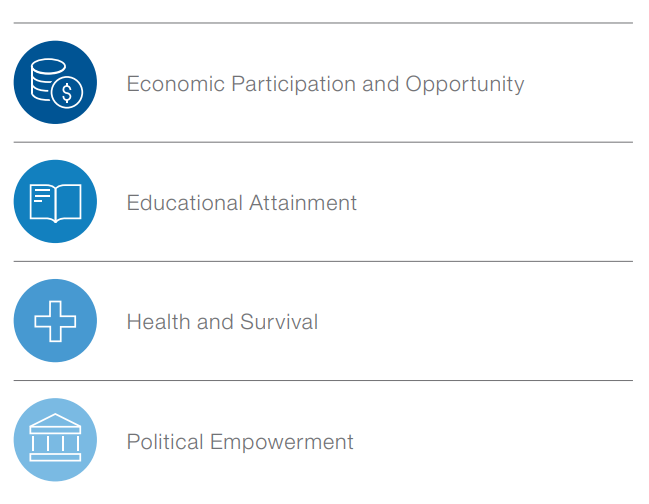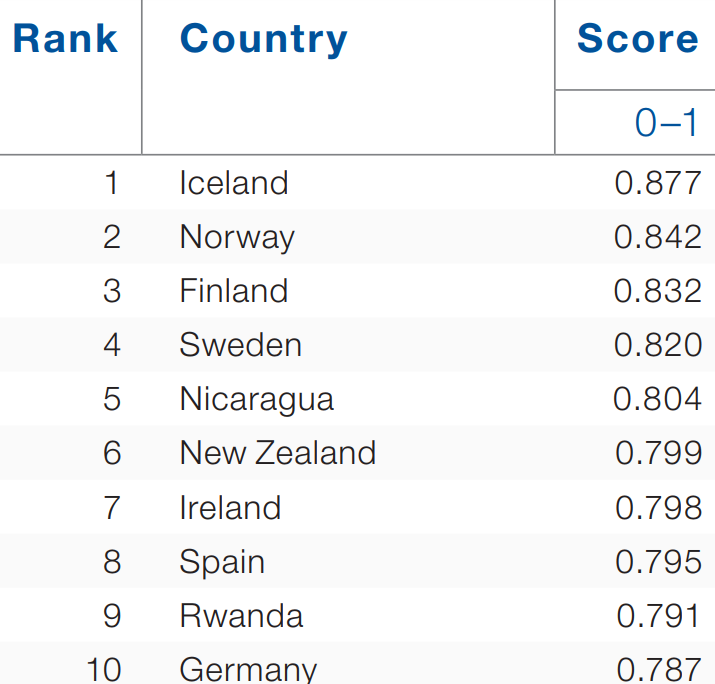Our world is on its way to building fairer and more inclusive economies. One aspect where gap remains huge is in gender.
According to the World Economic Forum’s (WEF) 2020 edition of the Global Gender Gap Report, gender parity will not be attained within our lifetimes. Most of our children will not experience it either.
Let’s delve deeper into the current global status of gender parity by looking into the key details of this report.
Quantifying the gender gap
In order to capture the numerical magnitude of gender-based disparities, WEF introduced the Global Gender Gap Index back in 2006. Based on their analysis, the gender-based disparities in the world can be adequately explained by taking into account four dimensions:

The four dimensions serve as the subindices which are taken into account to gain the final Global Gender Gap Index Score of a country.
The Global Gender Gap Index Score ranges from 0 to 1. The closer the index value is to 1, the more gender-neutral a country is.
Using the index scores, the performance of a country can be tracked each year and can even be compared with other countries.
Index Highlights
For 2020, the Global Gender Gap score for all the 153 countries included in this year’s study stands at 68.6%. This means that there remains a 31.4% gap to close, which is narrower than last year’s.
In terms of the country rankings, the following made it to the top ten:

For 2020, Iceland is the most gender-neutral country. This is the 11th time the country made it to the top of the list. With an index score of 0.877, Iceland only has 12.3% of overall gender gap to close.
In the second place is Norway with a score of 0.842, followed by Finland (0.832), Sweden (0.820), Nicaragua (0.804), New Zealand (0.799), Ireland (0.798), Spain (0.795), Rwanda (0.791), and Germany (0.787).
Key findings
The report also revealed that the gap is the largest in the Political Empowerment subindex, despite being the most improved dimension for this year. This means that while political representation among women is improving in the world, the gap remains to be glaringly huge.
In 2020 we are welcoming a new decade. It seems like we need to welcome a few more decades before gender parity can be attained. WEF predicts that gender parity will be attained only after 99.5 years on average.
The slow progress in closing the gap can be attributed to the gap in the Economic Participation and Opportunity dimension. Since the first edition of the report, there is a notable lack of progress in this dimension. The current rate of progress is so slow that it will take 257 years to fully close the gap.
An urgent matter
With all of these figures, the urgency of closing the gap is clear. The gender gap is depriving half of the world’s population to contribute fully to society.
Now that we are in a new decade, companies should invest in measures that will treat people with respect regardless of gender. At the same time, governments should also develop an inclusive policy framework that will allow opportunities to be accessible across all genders
The talent that we need to drive the Fourth Industrial Revolution cannot be found in just one gender, we are giving ourselves a huge disadvantage by not choosing the path of inclusivity. It is about time to make gender disparity a thing of the past.










